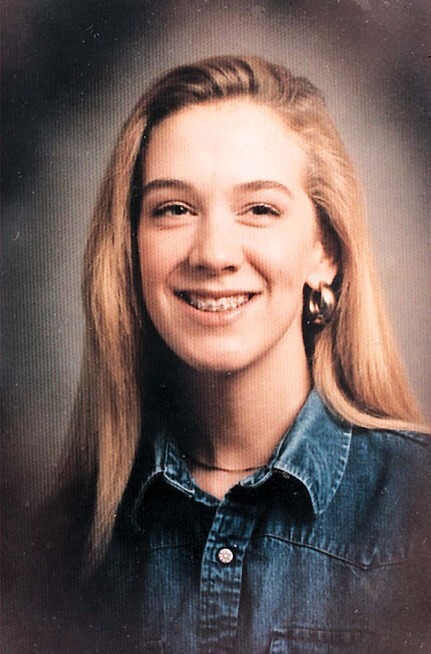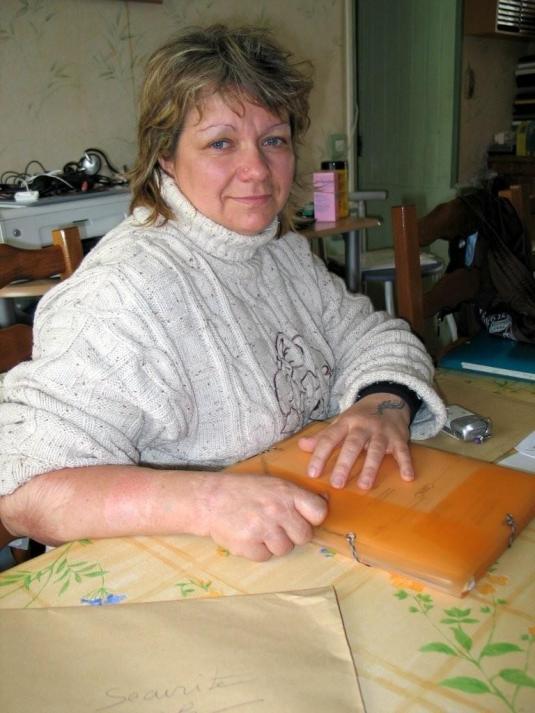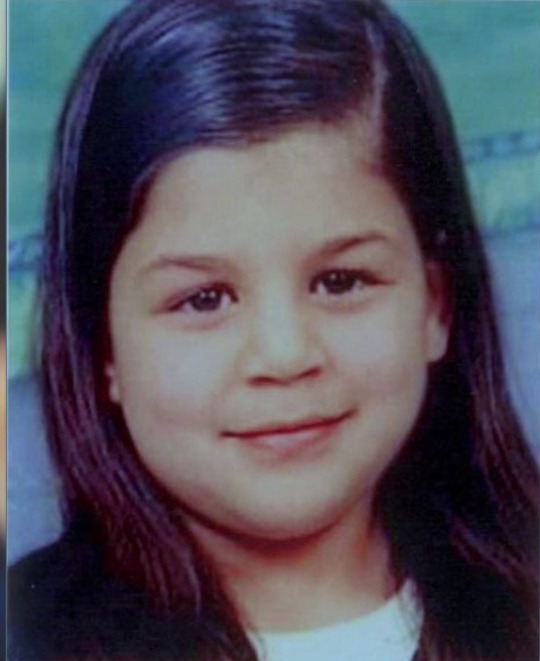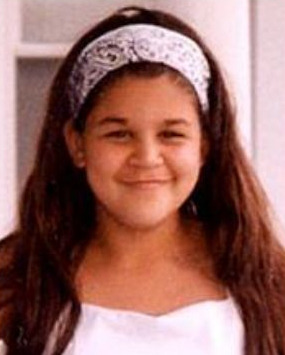Fascinated by true crime and female killers, but mostly Karla Homolka. I do not condone.
Don't wanna be here? Send us removal request.
Text
“Many years ago, my mom went on a date with Paul Bernardo. It ended quickly, as she found him to be "off". Glad she trusted her instincts...” (A Redditor) Credit

22 notes
·
View notes
Text
But also, Karla PLANNED this rape as a "christmas gift" for Paul, so lets not leave that part out.


RIP Tammy Lyn Homolka;
december 24, 1990 in st. catharines, ontario, canada. fifteen year old tammy had caught the eye of her sister karla and karla’s boyfriend paulbernardo. while the rest of the homolka family slept, paul convinced karla to allow him to rape tammy after months of fantasizing, and the pair did so. they used plentiful amounts of sedatives and alcohol to keep tammy unconscious, this ultimately proving too effective for their purposes and causing her to choke to death on her own vomit. her death was formally ruled an accident for years before karla and paul were recognized as “the ken and barbie killers”, whereupon tammy’s corpse was exhumed and the couple confessed to her assault and murder.
91 notes
·
View notes
Text

Karla (2006) — I hated literally everything about this movie, especially having to see Misha Collins in such a role. Misha himself hated the movie, and claims it’s the worst role he’s ever done. One thing I enjoy about watching disturbing movies is the knowledge that’s fake, but I had to go into this knowing Misha and his co-star were playing actual serial killers. Speaking of Misha, he also said the filming process was uncomfortable and creepy as well. According to Misha, Joel Bender found some of the torture (and worse) scenes “”hot”” or some shit. That’s how you know it’s bad. The movie feels very sympathetic towards Karla Homolka, and seems as though it’s trying to pin everything off on Paul. In reality, they both had a hand in those murders. The movie treated the situation as though Karla was the victim, instead of the actual victims. Not to mention, it was extremely dull and cliche, and lacked any sort of substance whatsoever whenever Misha’s character wasn’t beating the shit out of some girl. It made the Bernardo-Homolka murders look like a complete joke, and treated the victims with such disrespect that I’m surprised anyone would actually think this sort of movie was even slightly okay to produce. Currently, Paul Bernardo is in prison (where he belongs), and for whatever reason, Karla Homolka is living somewhere in Quebec. The fact that she is out there right now, as I’m typing this, disturbs me far more than the bland movie itself. The only sort of praise I can even give this movie is the fact that Misha Collins and Laura Prepon are brilliant actors, but not even their efforts were enough to keep this disaster from falling apart.
plot — based on the real life events of Paul Bernardo and Karla Homolka kidnapping, abusing, and murdering three young girls.
main cast — Misha Collins, Laura Prepon, Patrick Bauchau, Kristen Honey, Sarah Foret.
27 notes
·
View notes
Photo


14-year-old Leslie Mahaffy was one of the tragic victims of notorious serial killer couple Paul Bernardo and Karla Homolka. Leslie had attended the funeral and wake for her school friend Chris Evans who died in a car accident on the evening of June 14, 1991. Following the wake, Leslie and some friends decided to gather and drink to Chris’ memory. Leslie then made her way home but discovered she had been locked out as it was past her curfew and very late, around 2am. She then walked to a pay phone and called a friend asking if she could stay over but, for some reason, her friend refused. Leslie decided to walk back home and wake up her mother. On the way, Paul Bernardo found Leslie as he was out looking for license plates to steal. Bernardo approached Leslie and offered her a cigarette, then suddenly turned on her, wrapping his sweatshirt around her head and forcing her into his car. He sped home and woke up his wife, Karla Homolka who was in bed, telling her he had a surprise for her.
Homolka was initially upset and did not want to participate in Bernardo’s sexual assaulting of Leslie, instead deciding to do housework and taking their dog for a walk the following day while Bernardo was with Leslie in a bedroom in the house. However, later on the next day, Homolka would end up participating in assaulting and torturing the teenage girl and the couple eventually murdered Leslie together that night. Bernardo first attempted to strangle Leslie with electrical cord but, when this didn’t work, Homolka gave Leslie sedatives she had stolen from a vet clinic she was working at, rendering her unconscious. Bernardo claims that when he left the house to get gas for his car, Leslie was still alive, but when he returned she was dead - presumably due to Homolka killing her. Eventually, Bernardo would dismember Leslie’s body with a saw he borrowed from his grandfather, encase the parts in concrete and dump them in Lake Gibson, near St Catharine’s, Ontario. The concrete slabs were discovered a few days later by fisherman on the lake.
276 notes
·
View notes
Photo

Lydia Gouardo is a French woman who was imprisoned for 28 years while being raped and tortured by her legal, but not biological father, Raymond Gouardo, in their home in Meaux and Coulommes in Seinte et Marne. The abuse occurred between 1971 and 1999.
While in captivity, Lydia gave birth to six children, all fathered by Raymond Gouardo. She managed to escape at one point and phoned legal aid, but her father captured her again in a family residence in Melun. She was finally released in 1999 when her father died. She claims she was abused from the time she was eight years old. Her mother (not biological) had been aware of the abuse and a closed door trial was taken against her and she was handed down a four year suspended jail sentence.
Lydia claims to have run away from her father after he hit her too hard but she was always taken home by police since she was just a minor. Lydia says she did not realize the abuse was unusual. She has scars of the torture she endured from her neck to her ankles, from where her captor would burn her with boiling water and hydrochloric acid. Lydia was made to spent the majority of her time locked in the attic of the home she still lives in today.
Lydia published a book about her store called Le silence des autres (The Silence of Others) with the French journalist and writer Jean-Michel Caradec'h in 2008. Lydia has admitted that due to the worldwide news of the Fritzl case, she felt obligated to speak. She described her life behind shutters and she also stated she would like to be friends with Elisabeth Fritzl so she would feel less alone and she could support her. Gouardo feels the world “ignored her plight” as an incest and abuse victim.
Her legal mother was later convicted for her failure to report the crimes that she was aware of and for sexual abuse against one of Lydia’s children. Police have also suspected that Raymond Gouardo is responsible for the murders of four other girls in 1987. However, DNA tests done on one of the victims have not revealed any link with Gouardo and other evidence is purely circumstantial.
11 notes
·
View notes
Photo

Rachel Scott’s car becomes an impromptu memorial shortly after it was confirmed that she was one of the students killed during the massacre (April 21st, 1999)
998 notes
·
View notes
Photo

To some women, parenthood is an absolute necessity in their life. Being unable to conceive can be absolutely crushing for some. But one woman in particular wasn’t going to let that stop her from having a baby–even it if meant committing murder to get what she coveted. 23-year-old Bobbie Jo Stinnett (right) was thrilled when she found out she was going to be a first-time mother. Bobbie expressed her excitement in a chatrooom she was apart of called ‘’Ratter Chatter’’. One user in the chatroom Bobbie had particularly clicked with was Lisa Montgomery (left) from Kansas. She, too, was expecting a child. However, this would later be exposed as a lie. Despite Lisa already having four children of her own from a previous marriage and having gone through a tubal ligation, she had a history of faking pregnancies and this was just another one of those times. When Lisa had announced she was yet again pregnant to her family, they were skeptical.
On December 16, 2004, Lisa made the drive all the way to Bobbie’s home in Skidmore, Missouri. Bobbie ran a dog-breeding business from her own home, and plenty of customers came in and out every week with a new puppy in their arms. Bobbie was already expecting a new customer that day–a ‘’Darlene Fischer’’ who expressed interest in looking at the terriers. When Lisa arrived and introduced herself with the alias Darlene Fischer, the 8-month pregnant woman happily welcomed the unfamiliar stranger into her home. This would be proven to be a colossal mistake. As soon as Bobbie’s back was turned, she seized a pink neon rope around her neck and began choking the life out of her. Although the soon-to-be mother tried to put up a fight, she was unable to free herself and drew her last breath. But Lisa wasn’t finished with her. She fetched a knife and sliced open the dead woman, removing the still-alive premature baby from her womb. She rushed back to her Kansas home, telling her husband she had gone into labor prematurely. The police searched Bobbie’s computer and were able to trace ‘’Darlene Fischer’’ back to Lisa Montgomery’s home in less than a day. She was promptly arrested and is currently on death row, awaiting execution. The baby was returned to the care of her rightful father.
487 notes
·
View notes
Text

Karla Homolka decorating a Christmas tree in her and Paul’s house. The photo in the corner is of Tammy Lyn, who was offered as a Christmas present from Karla to Paul.
20 notes
·
View notes
Text



Paul Bernardo and Karla Homolka raped and murdered at least three minors.
93 notes
·
View notes
Text









Photos of Karla Homolka and Paul Bernardo, “Ken and Barbie” killers. Dates unknown.
257 notes
·
View notes
Photo

6-year-old Katherine Korzilius was the daughter of Paul Korzilius, the tour manager for Bon Jovi. She took ballet lessons as well as swimming and soccer lessons. At home, she liked to draw and build homes for bugs that she found in the garden.
On the 7th of August, 1996, Katherine, her mother, Nancy, and her brother, Chris, 9, had been running errands. They went to the math tutor, went to Subway for lunch, and then went to buy Paul some golf clubs for his birthday. On the way home, Nancy stopped at the cluster of post boxes at the top of the road near their house on Elder Circle, Austin, Texas. Maybe she was bored and fidgety from sitting in the car most of the day, but Katherine asked Nancy if she could walk back home from the post box. It was only several houses away so Nancy agreed.
When Katherine didn’t return, Nancy and Chris went searching for her. They discovered her face down on the asphalt around six houses down from their own in the opposite direction of where she was supposed to go. She was unconscious. Nancy scooped her up in her arms and drove 25 minutes to Seton Medical Center. It was discovered that Katherine had suffered a head injury that had fractured her skull. She passed away at the hospital seven hours later.
An autopsy initially ruled out a hit-and-run because Katherine suffered no other broken bones or internal injuries. He said that the small scrapes and bruises on her elbows, knees and hands suggested that she had fallen - perhaps from a car. A K-9 unit was able to pick up Katherine’s scent in an abandoned lot which was around thirty yards from the post boxes. Nancy has long believed that somebody abducted and murdered Katherine and then laid her out to be found.
Bon Jovi would later release a song titled “August 7, 4:15,” which is about the death of Katherine which still remains unsolved.
1K notes
·
View notes
Text



Tara Calico and “The Polaroid”
On the afternoon of September 20, 1988, Tara Leigh Calico (19) left her home in Belen, New Mexico to go for her daily bike ride along busy State Road 47 - and never came back. The police search party found only a few broken pieces of her Sony Walkman lying on the road, and no sign of her bicycle. Tara’s disappearance was treated as a kidnapping, and with so few clues to go on, the investigation into her case soon went cold.
Six months later, on June 15 1989, a convenience store worker in Port St Joe, Florida found a Polaroid photograph lying in the parking lot (pictured) - it depicted a gagged young woman and boy lying in the dark interior of a van, and did not appear to be posed. The woman gave the picture to police, along with a description of a white panel van that had been parked at the convenience store half an hour before. Roadblocks were hastily set up to intercept the van, but neither it or its driver has ever been found.
In just a few days, it was noted that the young woman in the Polaroid bore a marked resemblance to Tara Calico - her mother identified a scar on her leg as being similar to one her daughter had, and claimed the book visible next to the woman was one of Tara’s favourites. Three independent analysts who have viewed the photo came to conflicting conclusions as to whether the girl in the Polaroid could be Tara, but its undeniable that the photo was definitely taken after 1988 due to the particular quality of the paper. The boy in the Polaroid has never been identified.
In ensuing years the mystery of Tara Calico’s fate and the puzzle of the two people in the Polaroid have continued to stump investigators; in 2009 a police chief in New Mexico was mailed two anonymous letters containing polaroids featuring a gagged boy that looked very similar to the one in the photo twenty years before. Another polaroid snapshot, discovered at a building site in California in the mid-90s, depicted a gagged young woman lying on a blue stripy pillow exactly like the one seen in Florida. It’s not known for sure if these pictures are connected to each other, but coincides oddly with a psychics report that Tara Calico had been kidnapped by human traffickers and forced into prostitution in California. The same psychic also claimed that Tara had been murdered and gave a location to where her body was buried, but searches turned up nothing. To this day, her case remains open.
650 notes
·
View notes
Text

Paul Bernardo self-published the ebook A Mad World Order on Amazon. It sold well and even became a best seller in the war fiction section. Though, after a widescale backlash, the book was quietly removed from the site.
39 notes
·
View notes
Photo

The first woman to go to Ohio’s electric chair was Anna Marie Hahn, a a 26-year-old German immigrant who went on a killing spree between 1932 and 1937. When she moved to Cincinnati, Ohio, in 1929 to live with her aunt and uncle, she met another fellow immigrant named Phil Hahn. They married a year later, and Anna briefly returned to Germany to get her son from a previous affair, Oscar, before the three settled in together as a family. Anna cared for elderly men, bilking them of their money and then murdering them by poison when the money ran out. Her motive was to allegedly support her gambling habit. When her fifth and final victim’s autopsy revealed dangerous levels of arsenic in his body, this sparked police suspicions, which prompted the exhumations of her two prior clients which also revealed they had died by arsenic poisoning. In court, Anna offered a ‘’mercy killing’’ defense but the jury didn’t buy it; she was executed by the electric chair on December 7, 1938.
871 notes
·
View notes
Photo


Bianca Lebron was only 10 years old when she vanished on November 7th, 2001. She was last seen in front of her elementary school in Bridgeport, Connecticut. It was 8:30 in the morning and class was about to begin; however Bianca informed her friends and her teacher that she would not be actually attending class that day. She told them that instead, she was going shopping with her uncle. Bianca asked her friends if they wanted to join, but they declined. Shortly thereafter, an older model brown/tan van pulled up in front of their school. Bianca’s friends watched as she got inside the car and it drove off. Bianca has never been seen or heard from again.
When Bianca did not return home from school that afternoon, her mother simply thought she had gone to a friend’s house. As hours passed, Bianca’s mother grew increasingly worried and ended up calling the police at 8:30pm that evening. Bianca’s family soon learned that Bianca never attended school that day. Investigators spoke to the friends who witnessed her getting into the van that morning. They told investigators that they were not worried when Bianca got into the van because they thought the driver was Bianca’s uncle. Her family members told investigators that Bianca does not have an uncle, and none of her relatives drive the car she was picked up in. At this point, it was clear that Bianca had been abducted. The suspect was described as a Hispanic male around 20 to 30 yrs old, 5"8 to 5"11 with an average build, black curly hair, long sideburns and a beard.
Months later, in April 2002, police identified a person of interest: 20 year-old Jason Lara. Jason matched the description of the suspect, and one of his friends owned a van similar to the one Bianca was seen getting into on the day of her abduction. Additionally, Bianca’s loved ones have stated that Jason was Bianca’s “secret boyfriend.” Bianca had apparently told her friends that she had a crush on an older guy named Jason. Bianca’s family members said that the two had been caught kissing in the past as well. The two were frequently around each other prior to Bianca’s disappearance; as Bianca’s great uncle was in a relationship with Jason’s mother. Due to all of this, investigators believed they had their prime suspect. The only problem was, they couldn’t locate him—Jason had left Bridgeport a month after Bianca’s abduction.
Over a year later, in November 2003, Jason finally contacted Bridgeport police and denied any involvement in Bianca’s disappearance. Investigators traced his call to Fort Myers, Florida. As they headed there to find him, they also learned that Jason was now using the last name Gonzalez instead of Lara. Despite never legally changing his name, Jason used the last name Gonzalez on a fingerprint card. Due to this, police were able to charge him with second-degree forgery. Investigators decided to pursue these charges as they hoped that they could transfer him back to Bridgeport following his arrest and question him about Bianca’s case. When investigators were finally able to question him, Jason was apparently not very cooperative. Eventually, though, investigators eventually were able to confirm that he had an alibi at the time of Bianca’s abduction. After that, he was no longer considered a suspect.
Ever since Jason was cleared, very little information has been released about Bianca’s case. The school from which Bianca disappeared enforced stricter attendance-taking policies after her abduction, and the teacher who allowed her to leave was suspended without leave. In 2008, the city reached a settlement to pay the Lebron family $750,000 after they filed a lawsuit claiming Bianca’s teacher let her leave without asking Bianca about the “uncle.”
Bianca remains missing today. The FBI is investigating her case. If you have any information that could lead to Bianca’s whereabouts, please submit and anonymous tip here.
241 notes
·
View notes
Photo


~* THE STUDENT NURSE MURDERER *~
On the night of July 13, 1966, eight student nurses are brutally murdered by Richard Speck at their group residence in Chicago, Illinois. Speck threatened the women with both a gun and a knife, tying each of them up while robbing their townhouse. Over the next several hours, Speck stabbed and strangled each of the young women throughout various rooms of the place. One young woman, Corazon Amurao, managed to escape with her life by hiding under a bed; Speck had lost count of his victims.
Richard Speck was an alcoholic and a petty criminal with over 20 arrests on his record by the age of 25. He had “Born to Raise Hell” tattooed on his forearm and periodically worked on cargo boats traveling the Great Lakes. On the night of July 13, after drinking heavily at several Chicago bars, Speckbroke intothe townhouse for student nurses of the South Chicago Community Hospital.
Speck then used his gun to force three nurses into a bedroom, where he found three more women. Using nautical knots, he then tied the women’s hands and feet with strips torn from bedsheets. By midnight, three more nurses had come home only to be tied up as well. Speck assured the women that he was only going to rob them.
After stealing from the women,he took theminto separate rooms, killing them one by one. The remaining women heard only muffled screams from their roommates. Amurao, who was hiding underher bed, waited until 6 a.m. the following day before leaving her hiding place. She then crawled out onto a second-story ledge and screamed for help. Police responding to the cries obtained a detailed description of Speck from Amurao; the sketch was placed on the front page of every local newspaper the next morning. Speck, who was hiding out at a dollar-a-night hotel, slashed his right wrist and left elbow in a suicide attempt on July 16.
Speck was arrested the next day at the Cook County Hospital. With Amurao’s identification and his fingerprints left at the scene, Speck was convicted and sentenced to death. However, in 1972, when the Supreme Court invalidated the death penalty law under which he was sentenced, Speck was re-sentenced to 400 years in prison. He died in prison of a heart attack on December 5, 1991.
Richard Speck and his horrific crime was portrayed in Season 1 of Mindhunter - a tv show about the Behavioural Science Unit of the FBI - (available on Netflix)
302 notes
·
View notes
